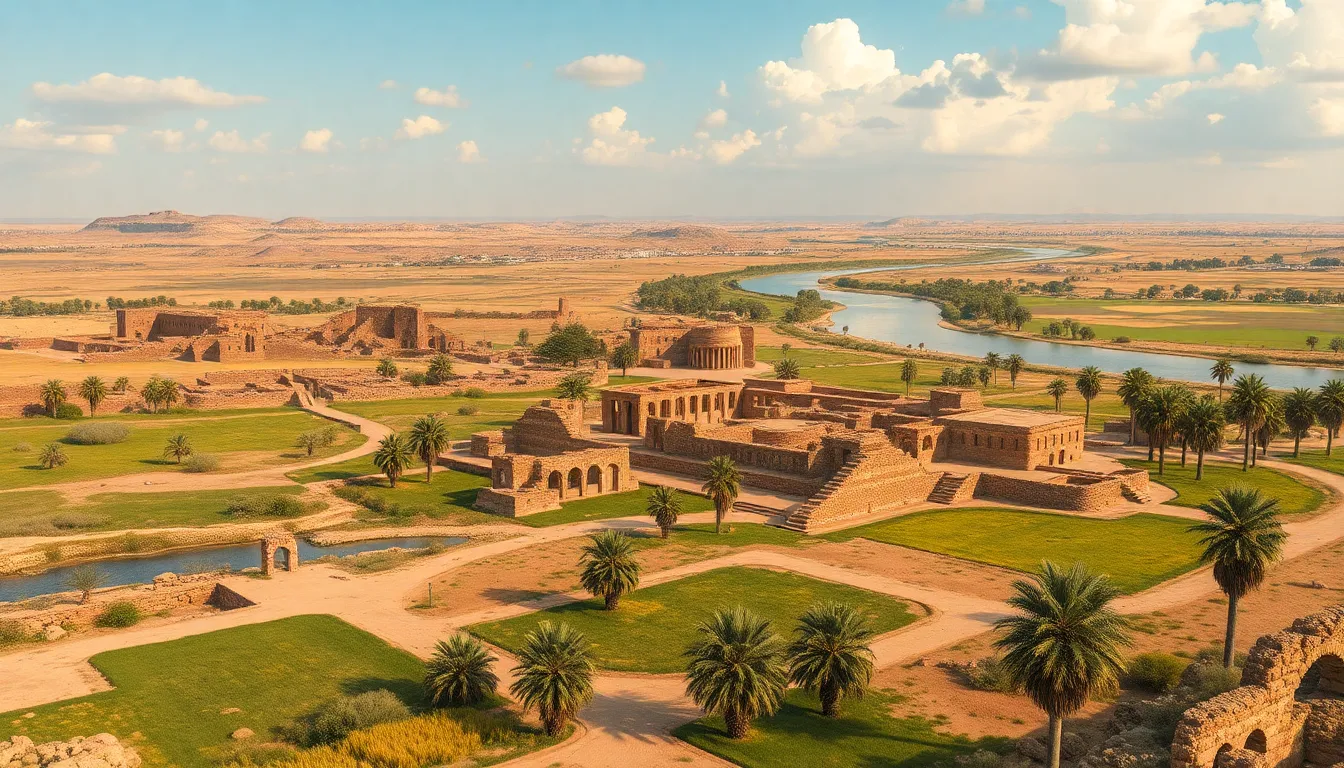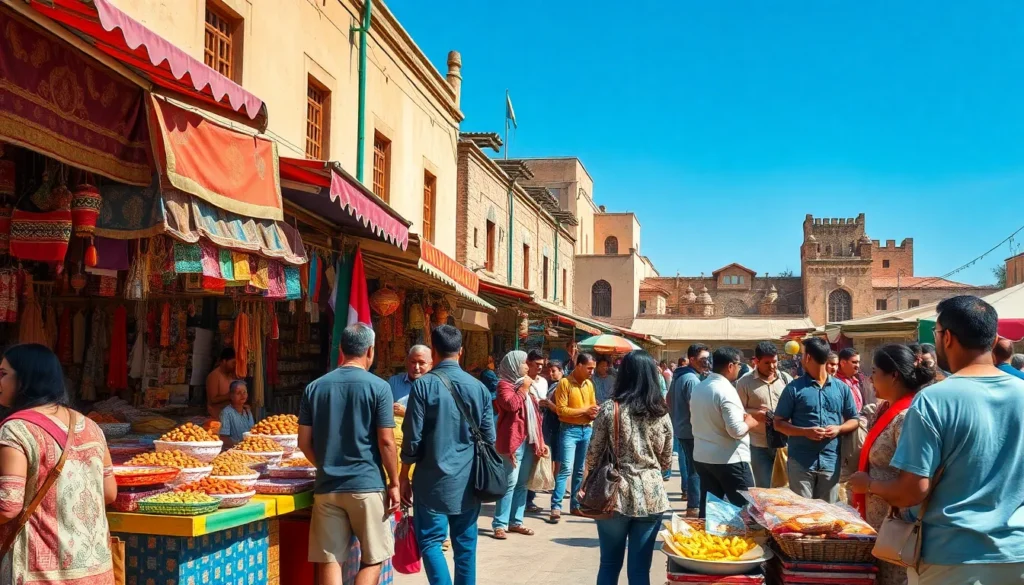Cultural hearths are the beating hearts of civilization, where ideas, innovations, and traditions spring to life. Imagine a vibrant marketplace buzzing with energy, where every corner reveals a new story waiting to be told. These dynamic hubs have shaped human history, influencing everything from art and language to religion and cuisine.
Table of Contents
ToggleUnderstanding Cultural Hearths
Cultural hearths are essential hubs of civilization where ideas, innovations, and traditions originate. These centers profoundly shape human history and culture across various domains.
Definition and Importance
A cultural hearth represents a geographic area that fosters the development and diffusion of cultural practices. Importance lies in their role as points where significant changes initiate, influencing surrounding societies. For example, the Fertile Crescent is known for agriculture’s emergence. Cultural hearths provide foundational elements for languages, religions, and artistic expressions. As these elements spread, they foster cultural interactions. Societies identify these areas as sources of knowledge and progress, driving social and economic change.
Characteristics of Cultural Hearths
Characteristics of cultural hearths include fertile landscapes, access to water sources, and favorable climates. Diversity in population enhances the exchange of ideas and practices. Innovations typically arise from interaction between different cultural groups. Trade routes often link these areas, facilitating resource distribution and communication. Urban centers emerge due to economic activities, leading to vibrant communities. These elements support sustained growth and development, establishing cultural hearths as key players in history.
Major Cultural Hearths

Cultural hearths represent foundational regions where civilizations thrive and spread their influence. Various centers of human development have played pivotal roles in shaping cultures globally.
Mesopotamia
Mesopotamia, often dubbed the “Cradle of Civilization,” sits between the Tigris and Euphrates rivers. This region birthed writing systems, such as cuneiform, around 3200 BCE. Agriculture flourished here with the invention of irrigation techniques, boosting food production significantly. Cities like Ur and Babylon emerged as powerful centers for trade, fostering innovations in law, mathematics, and astronomy. The rich soil and strategic location facilitated cultural exchanges that influenced neighboring societies.
Indus Valley
The Indus Valley, home to the ancient Harappan civilization, thrived between 2600 and 1900 BCE. Cities like Harappa and Mohenjo-Daro showcased advanced urban planning, featuring well-organized streets and sophisticated drainage systems. This region’s agricultural practices relied heavily on the Indus River, which supported extensive crop cultivation. Weaving and pottery exemplified the craft traditions that spread from this hearth. The trade network connected various cultures, promoting the exchange of goods and ideas.
Nile Valley
The Nile Valley is integral to understanding early Egyptian civilization. Its fertile land supported agriculture for thousands of years, primarily through the seasonal flooding of the Nile River. Pharaohs built monumental structures like the pyramids, symbolizing the power and religious beliefs of the time. The valley’s natural resources enriched trade and artistic expression, contributing to advancements in writing, medicine, and engineering. Cultural practices rooted in this region continue to leave a lasting legacy on global culture.
Impact of Cultural Hearths on Civilization
Cultural hearths significantly shaped civilization through various channels. These centers facilitated the exchange of ideas and practices, fostering linguistic development and artistic expression.
Language and Communication
Language emerged in cultural hearths as a vital tool for communication. Languages developed within these regions reflected the unique experiences and environments of their communities. Rich tapestries of dialects and scripts arose, influencing neighboring areas and promoting cultural cohesion. Trade routes expanded language exposure, enabling the migration of words across populations. The spread of written communication allowed for the preservation of cultural narratives, making it essential for historical documentation and storytelling.
Art and Architecture
Art and architecture flourished in cultural hearths, serving as expressions of identity and innovation. These areas produced unique artistic styles, influenced by local traditions and external interactions. Architectural marvels, such as temples and urban layouts, emerged, reflecting societal values and technological advancements. Artistic techniques spread through trade and religion, allowing for cross-cultural exchanges that enhanced creativity. Iconic sculptures, paintings, and structures from these hearths continue to inspire modern aesthetics and architectural practices.
Agriculture and Economy
Agriculture transformed societies rooted in cultural hearths, providing essential food sources and economic stability. Innovations in agricultural practices stemmed from these regions, often including crop rotation and irrigation methods. Diverse agricultural outputs supported population growth, leading to urbanization and trade networks. As economies expanded, specialized labor emerged, creating roles in craftsmanship and commerce. These economic advancements further solidified the importance of cultural hearths in shaping the trajectory of civilizations.
Modern Perspectives on Cultural Hearths
Cultural hearths remain relevant in today’s interconnected world. Their dynamics influence modern interactions and cultural exchanges.
Globalization and Cultural Exchange
Globalization accelerates the dissemination of ideas and practices originating from cultural hearths. Urban centers act as melting pots, bridging cultural gaps and promoting understanding among diverse populations. Technological advances support this process, enabling instant communication and the sharing of cultural innovations. Individuals travel extensively, experiencing different heritages, further reinforcing global interconnectedness. The fusion of traditional and contemporary elements creates new cultural forms, allowing societies to evolve and adapt. As a result, modern cultural expressions reflect a blend of ancient practices and modern influences, illustrating the enduring legacy of these historic centers.
Preservation of Cultural Heritage
Preserving cultural heritage has become increasingly important in a globalized world. Organizations and communities prioritize safeguarding traditions and practices as they face the threat of homogenization. Educational initiatives foster awareness of cultural heritage, ensuring that future generations appreciate their roots. Museums and cultural institutions play crucial roles in this effort, showcasing artifacts and narratives from cultural hearths. Collaborative efforts often involve local communities, emphasizing the importance of maintaining distinct identities. By celebrating unique cultural contributions, societies can combat cultural erosion and promote intercultural dialogue, ensuring that the lessons and values from historical hearths remain vibrant.
Cultural hearths have undeniably shaped the course of human civilization. These dynamic centers fostered innovation and the exchange of ideas that continue to resonate today. Their influence on language, art, and social structures laid the groundwork for modern societies.
As globalization accelerates, the relevance of cultural hearths persists. They serve as reminders of the rich tapestry of human experience, bridging cultural divides and promoting understanding. The commitment to preserving cultural heritage ensures that the legacies of these historic centers remain vibrant and impactful.
In a world that’s increasingly interconnected, recognizing and celebrating the contributions of cultural hearths can inspire future generations. By valuing these foundational elements, societies can cultivate a deeper appreciation for diversity and the shared narratives that unite humanity.





